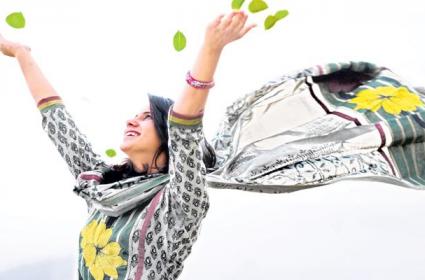International Women's Day 2022 Theme, History
8 Mar, 2022 13:43 IST|Sakshi Post

8 March is International Women’s Day - devoted to celebrating the achievements of women and seeking gender equality.
The theme this year is #BreaktheBias - and campaigners are urging people to call out gender stereotyping and discrimination when they see it.
But when did International Women’s begin and why do we still need it today?
“Achieving gender equality and empowering women and girls is the unfinished business of our time, and the greatest human rights challenge in our world.”
So says United Nations Secretary-General António Guterres.
Gender equality is so important to the UN that it’s central to the Sustainable Development Goals.
And the continued fight for women’s rights is marked each year by International Women’s Day.
What is International Women’s Day and when did it start?
International Women’s Day (IWD) takes place on 8 March every year.
It began life as National Women’s Day in the United States back in February 1909. The following year, at the second International Conference of Working Women in Copenhagen, Denmark, women’s rights activist Clara Zetkin called for an international women’s day to give women a greater voice to further their demands for equal rights.
It was unanimously approved by the female attendees from 17 countries, including Finland’s first three women MPs. International Women’s Day was marked for the first time in March 1911 - and the date was fixed as 8 March in 1913. The United Nations celebrated it for the first time in 1975.
How is the day marked around the world?
International Women’s Day is celebrated as a national holiday by countries across the globe, with women often given flowers and gifts - and there are IWD events in major cities worldwide.
On 8 March, 1914, there was a women’s suffrage march in London, calling for women’s right to vote, at which high-profile campaigner Sylvia Pankhurst was arrested.
In 2001, the internationalwomensday.com platform was launched to reignite attention for the day, celebrate women’s achievements and continue to call for gender parity.
On the centenary in 2011, sitting US President Barack Obama called for March to be known as Women’s History Month. He said: “History shows that when women and girls have access to opportunity, societies are more just, economies are more likely to prosper, and governments are more likely to serve the needs of all their people.”
What is the theme of International Women’s Day in 2022?
Each year, there’s a different theme - and this year, it’s #BreaktheBias.
Bias, whether unconscious or deliberate, can make it difficult for women to progress in their careers or even receive the right healthcare. Jessica Nordell, author of The End of Bias, says everyday incidents of gender bias - such as women receiving less credit in mixed work groups - accumulate, creating the so-called glass ceiling which sees far fewer women in c-suites globally.
This year, International Women’s Day is urging everyone to “actively call out gender bias, discrimination and stereotyping each time you see it”.
What is the state of gender inequality globally?
The COVID-19 pandemic has stalled progress towards achieving gender parity.
The World Economic Forum’s Global Gender Gap Index benchmarks 156 countries across four key dimensions (Economic Participation and Opportunity, Educational Attainment, Health and Survival, and Political Empowerment) and tracks progress towards closing gender gaps over time.
The global average distance to parity grew in 2021, according to the latest Global Gender Gap Report, which found it will now take 135.6 years to close the gender gap compared to 99.5 years in 2020.
Of the four gaps tracked, Political Empowerment remained the largest, with only 22% closed - and having widened since 2020 by 2.4 percentage points.
What is the gender pay gap?
The gender gap in Economic Participation and Opportunity remained the second-largest of the gaps, with only 58% closed so far. The pandemic had a disproportionate impact on women, partly because they are more likely to work in the harder-hit sectors, including retail.
The gender pay gap is the “difference between the average pay of men and women within a particular group or population” according to the Fawcett Society, which campaigns for equal pay in the UK.
Each year, the charity marks Equal Pay Day in the UK, the day of the year at which women stop earning relative to men. In 2021, that date was 18th November - and the gender pay gap had grown.














